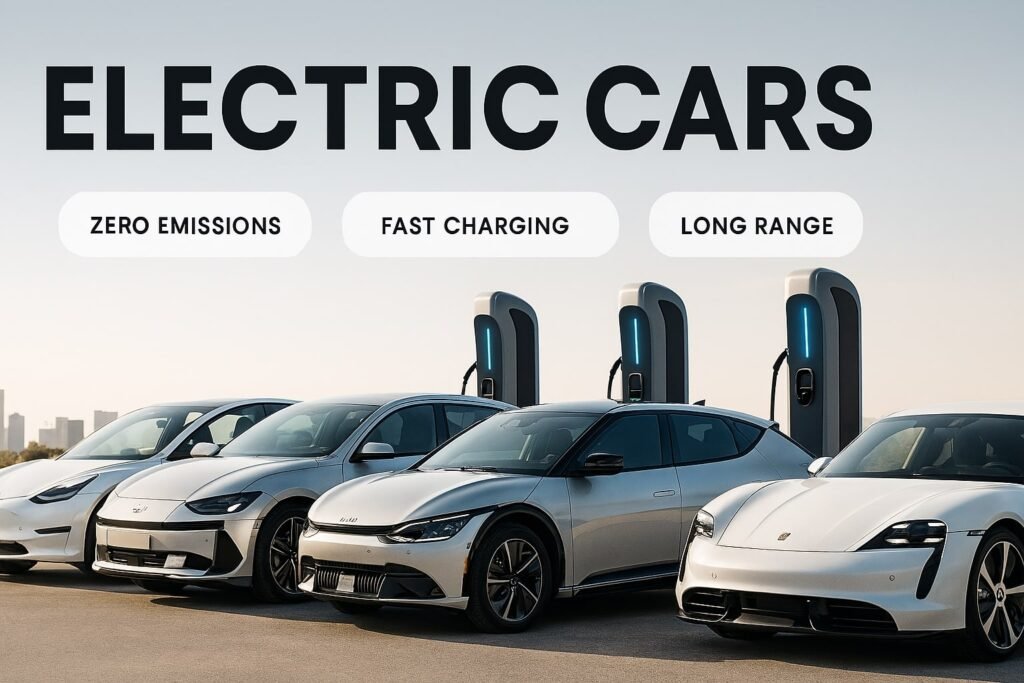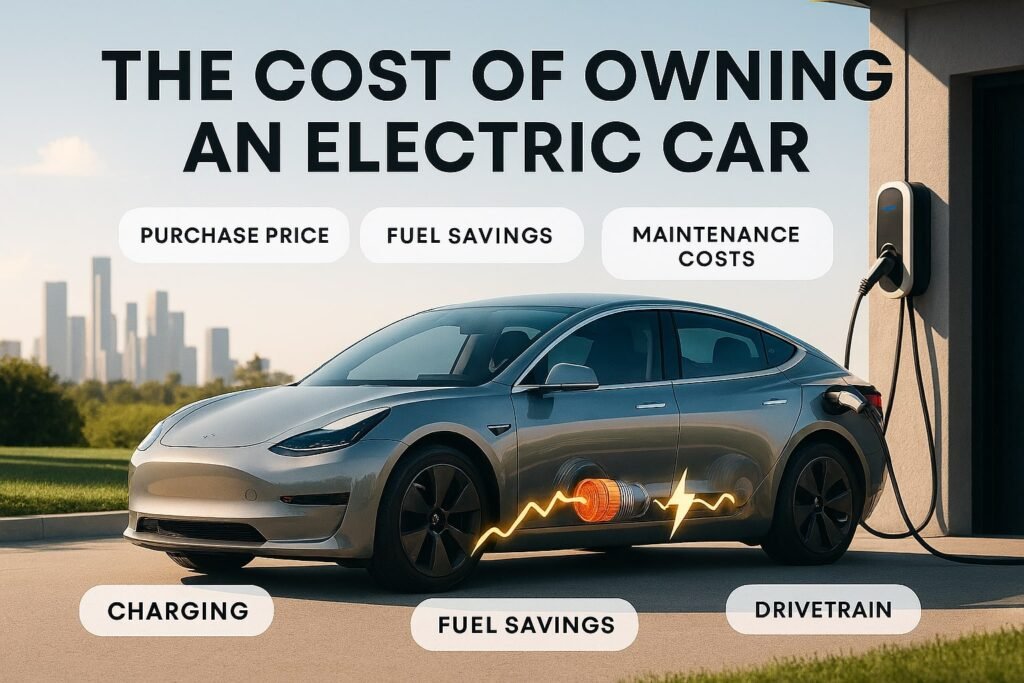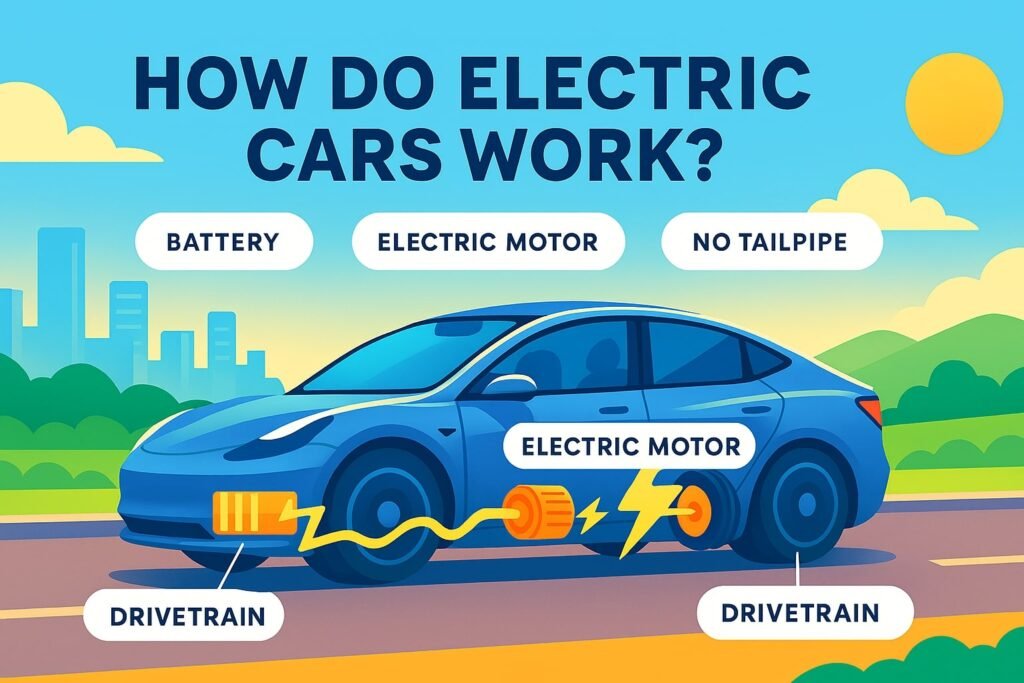Electric Cars (EVs) seem to be everywhere. You see them gliding silently down city streets and parked in more and more driveways. They promise a cleaner, cheaper way to travel. But are they really the perfect solution? The truth is, there are clear pros and cons to owning an electric car.
This guide will give you a simple, honest look at the electric vehicles’ advantages and disadvantages. We will cover everything from cost and performance to their real impact on the environment.
The Pros and Cons of Electric Vehicles
So, are electric vehicles worth it? Yes, for many people, the benefits of lower running costs, a smoother ride, and zero emissions make them a great choice. However, the higher initial price and concerns about charging can be significant drawbacks.
My Experience Driving an EV for a Year
When I first switched from a gas car to an all-electric vehicle (BEV), my biggest worry was range anxiety. I live in a suburban area, and the thought of running out of power on a long trip was stressful. My first few weeks involved a lot of careful planning. I used apps to find public charging stations and always made sure the car was plugged in at home overnight.
What surprised me most was how quickly I adapted. Home charging is incredibly convenient. I wake up every morning with a “full tank.” For my daily commute and errands, I never even think about the battery level. On longer trips, I learned that fast-charging stops are a nice break to stretch and grab a coffee. The car’s navigation system even plans these stops for me.
The driving experience itself is amazing. The instant torque makes acceleration feel quick and fun. The ride is so quiet and smooth. It feels like a huge upgrade from my old Internal Combustion Engine (ICE) vehicle.
What I Like: The Strengths of EVs

Here are the main benefits I’ve experienced:
- Lower Running Costs: I save a lot of money. Electricity is much cheaper than gasoline. I also don’t have to worry about oil changes or other regular engine maintenance.
- A Better Driving Experience: EVs are quiet, smooth, and quick. The regenerative braking, which charges the battery when I slow down, is a cool feature that makes driving more efficient.
- Environmental Benefits: It feels good to know I’m not producing tailpipe emissions. This is a big deal for air quality in cities.
- Government Incentives: I was able to get a federal tax credit when I bought my car. This government incentive made the higher purchase price much more manageable.
Areas for Improvement: The Weaknesses of EVs
Of course, it’s not all perfect. Here are some of the downsides:
- Higher Upfront Cost: EVs still cost more to buy than similar gas cars. The battery is a big part of that expense.
- Charging Can Be a Hassle: While home charging is easy, using public chargers can be frustrating. Sometimes they are broken, or all the spots are taken. Fast charging is great but still not as quick as filling a gas tank.
- Range Anxiety is Real (at first): Cold weather can reduce the battery’s range. This means you have to be more careful with your planning during winter months.
- Battery Concerns: The lithium-ion batteries in EVs have an environmental cost. Mining for materials like lithium and cobalt is a serious issue. I hope that battery production and recycling will become much more sustainable over time.
How Do Electric Cars Work?
Electric cars are simpler than gas cars. They use an electric motor instead of an engine.
- A large lithium-ion battery pack stores electricity.
- This power is sent to one or more electric motors.
- The motors turn the wheels.
EVs have no tailpipe. This means they don’t release greenhouse gas emissions (GHG) as they drive.
There are a few different types of electric vehicles:
- Battery Electric Vehicles (BEVs): These are fully electric. They run only on electricity from their battery.
- Plug-in Hybrid Electric Vehicles (PHEVs): These have both an electric motor and a gas engine. They can run on electricity for a short range and then switch to gas.
- Hybrid Electric Vehicles (HEVs): These have a gas engine and a small electric motor. The battery is charged by the engine and braking. You can’t plug them in.
Comparing EV vs. Gas Cars (ICE)
Let’s break down the key differences between EVs and traditional Internal Combustion Engine (ICE) vehicles.
| Feature | Electric Vehicle (EV) | Gas Vehicle (ICE) |
| Fuel | Electricity | Gasoline or Diesel |
| Emissions | Zero tailpipe emissions | Produces CO2 and other pollutants |
| Running Cost | Lower (cheaper fuel, less maintenance) | Higher (gas prices, regular service) |
| Performance | Quick and quiet acceleration | Engine noise and vibration |
| Refueling | Charge at home or public stations | Fill up at gas stations in minutes |
| Upfront Cost | Generally higher | Generally lower |
Are Electric Cars Really Better for the Environment?
Yes, EVs are generally better for the environment than gas cars over their lifetime. They produce zero tailpipe emissions, which is great for air quality.
However, the full picture is more complex. The environmental impact of an EV depends on two main things:
- How the Battery is Made: The process of battery production and recycling is a major concern. Mining for lithium, cobalt, and other materials can cause environmental damage.
- Where the Electricity Comes From: An EV is only as clean as its power source. If you charge your car using electricity from coal plants, the overall benefit is smaller. The good news is that grids are getting cleaner. When you charge an EV with renewable energy sources like solar or wind, the benefit is huge.
The Cost of Owning an Electric Car
Is it cheaper to own an EV? Over time, it often is.
- Purchase Price: This is usually the biggest hurdle. EVs cost more upfront. But government incentives and tax benefits can help lower this cost.
- Fuel Costs: This is where you save big. Charging an EV at home costs much less than buying gas.
- Maintenance Costs: EVs have fewer moving parts than gas cars. No oil changes, spark plugs, or exhaust systems to fix. This means lower maintenance bills.
Charging: The Key to EV Life
The charging infrastructure is growing quickly, but it’s still a work in progress.
- Home Charging (Level 1 & 2): Most EV owners do most of their charging at home. A standard outlet (Level 1) can work, but it’s very slow. A Level 2 charger is much faster and is what most people install.
- Public Charging (Level 2 & DC Fast Charging): You’ll find these at shopping centers, workplaces, and along highways. DC Fast Charging is the quickest way to add a lot of range in a short time.
- Range Anxiety: This is the fear of running out of power. As batteries get bigger and chargers become more common, this is becoming less of an issue for most drivers.

EVs in Developing Countries: The Case of India
The EV revolution isn’t just for wealthy nations. India is a great example of an emerging market embracing electric mobility.
EV sales in India are growing rapidly. In 2023, EV sales crossed the 1.5 million mark. The government is pushing this change with programs like the FAME (Faster Adoption and Manufacturing of Hybrid and Electric Vehicles) scheme. This offers government incentives to buyers.
However, challenges remain. The charging infrastructure is still limited. High upfront costs are also a barrier for many. But with a focus on electric scooters and three-wheelers, India is finding its own path to an electric future.
Frequently Asked Questions
1. How long do EV batteries last?
Most EV batteries are designed to last for the life of the car. They are typically covered by a warranty for at least 8 years or 100,000 miles.
2. Are EVs safe in a crash?
Yes. EVs must meet the same safety standards as gas cars. Their heavy battery packs give them a low center of gravity, which can make them less likely to roll over.
3. Can I take an EV on a road trip?
Absolutely. Newer EVs have ranges of 250-300 miles or more. You’ll just need to plan your route around DC fast-charging stations.
4. What happens to old EV batteries?
This is a key part of battery production and recycling. Companies are working on ways to reuse and recycle old batteries. They can be used for energy storage or be broken down to recover valuable materials.
5. Do EVs work well in cold weather?
Cold weather can reduce an EV’s range by 20% or more. The battery is less efficient, and running the heater uses a lot of power. It’s something to be aware of if you live in a cold climate.
The Road Ahead for Electric Vehicles
Electric vehicles are here to stay. They offer a cleaner, cheaper, and more enjoyable way to drive. While there are real challenges—like cost, charging, and battery sustainability—the technology is improving all the time.
The shift to EVs is a huge step toward a cleaner future. It reduces our reliance on fossil fuels and helps fight climate change. If you are thinking about your next car, it’s worth taking a serious look at an electric one.
About the Author
Alex Carter is a technology journalist and EV enthusiast with over a decade of experience covering the auto industry. He has test-driven dozens of electric vehicles and writes about the intersection of technology, sustainability, and transportation. Alex owns a BEV and has firsthand experience with the pros and cons of electric car ownership.
References
- International Energy Agency (IEA), Global EV Outlook 2024.
- U.S. Department of Energy, “Alternative Fuels Data Center.”
- “FAME India Scheme Phase II,” Department of Heavy Industry, Government of India.


